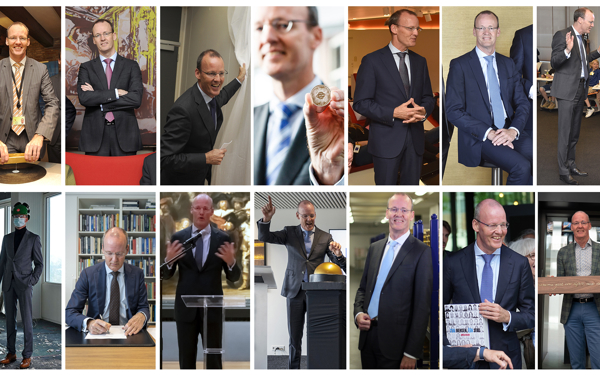Our negative result for 2023 was caused by the European Central Bank’s interest rate hikes during that year to reduce inflation. As interest rates were raised, our interest expense went up, whereas interest income barely increased. Central banks’ interest rate hikes also lead to negative results elsewhere, both in the euro area and beyond. Yesterday, for example, the ECB announced a €7.9 billion negative result that – like at DNB – is largely absorbed through the use of a provision for financial risks. After the release of the provision, the ECB’s loss amounts to €1.3 billion. Earlier this year, Federal Reserve announced it had run a record operating loss of around $114 billion.
Consequence of purchase programmes
DNB is among the various central banks whose financial results are relatively poor. To mitigate the impact of the COVID-19 pandemic, central banks in the Eurosystem have made massive purchases of sovereign bonds from their own countries to provide liquidity and depress interest rates, pursuing a policy known as quantitative easing. Thanks to the Dutch State's high credit rating, we purchased the bonds at relatively low rates. It should be noted that our losses are counterbalanced by low financing costs for the Dutch State. The amount the Dutch State has saved on interest charges on public debt thanks to the ECB’s quantitative easing amounts to around €28 billion This benefit exceeds the losses we expect to incur in 2023 and the coming years.
Based on our most recent year-end projections, we expect our buffers to remain positive (see the figure). Our current expectations are more favourable than the projections we released in December 2023. Previously, we announced in a letter to the Dutch Minister of Finance that we expected to face losses for the coming years due to higher interest rates. This is set to remain the case for the foreseeable future, although the market has started to price in falling interest rates. From 2029 onwards, however, we expect to return to profitability. We will then initially seek to restore our buffers in the first few years, before distributing dividends to the Dutch State. However, our expectations about restoring our buffers are subject to considerable uncertainty. This is because our cumulative losses are highly dependent on interest rate developments, and they could still exceed our capital and reserves, as previous projections have shown.
Figure 1 - Estimated development in our buffers





